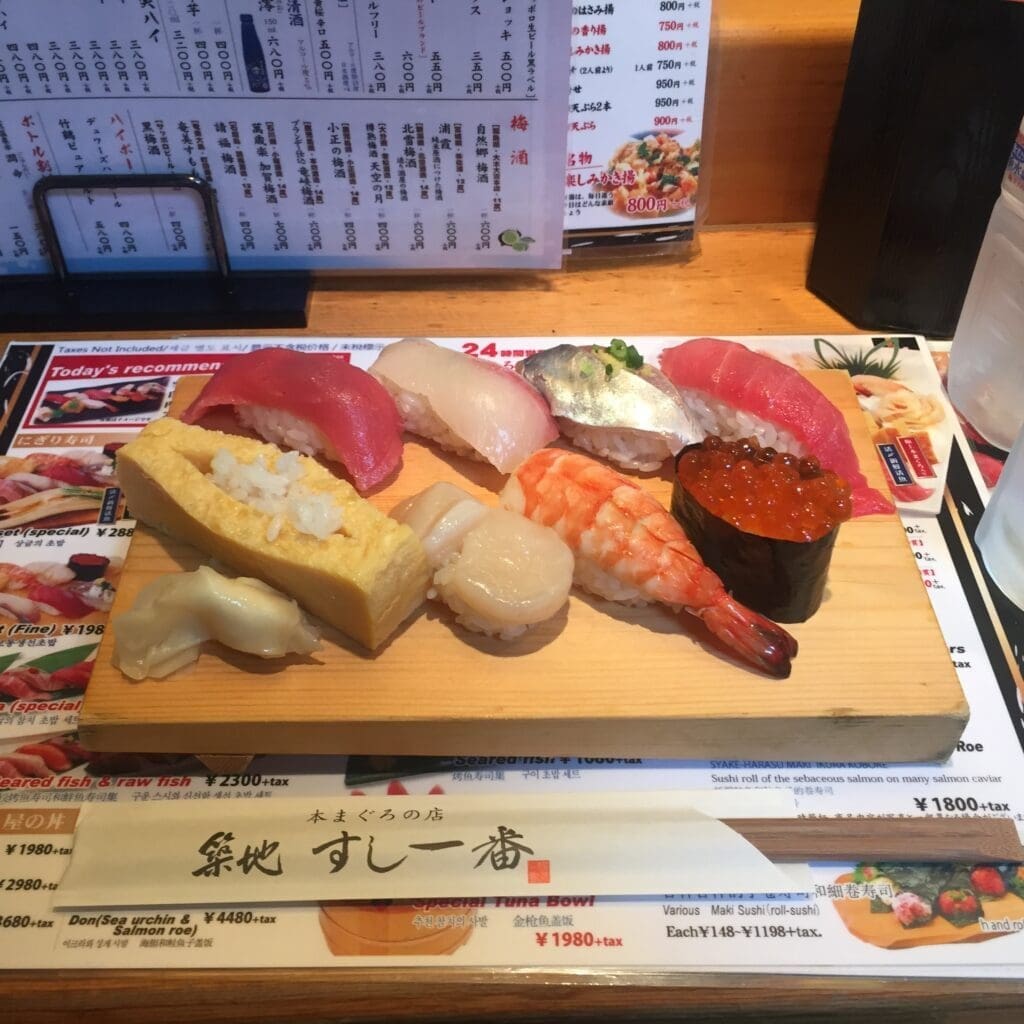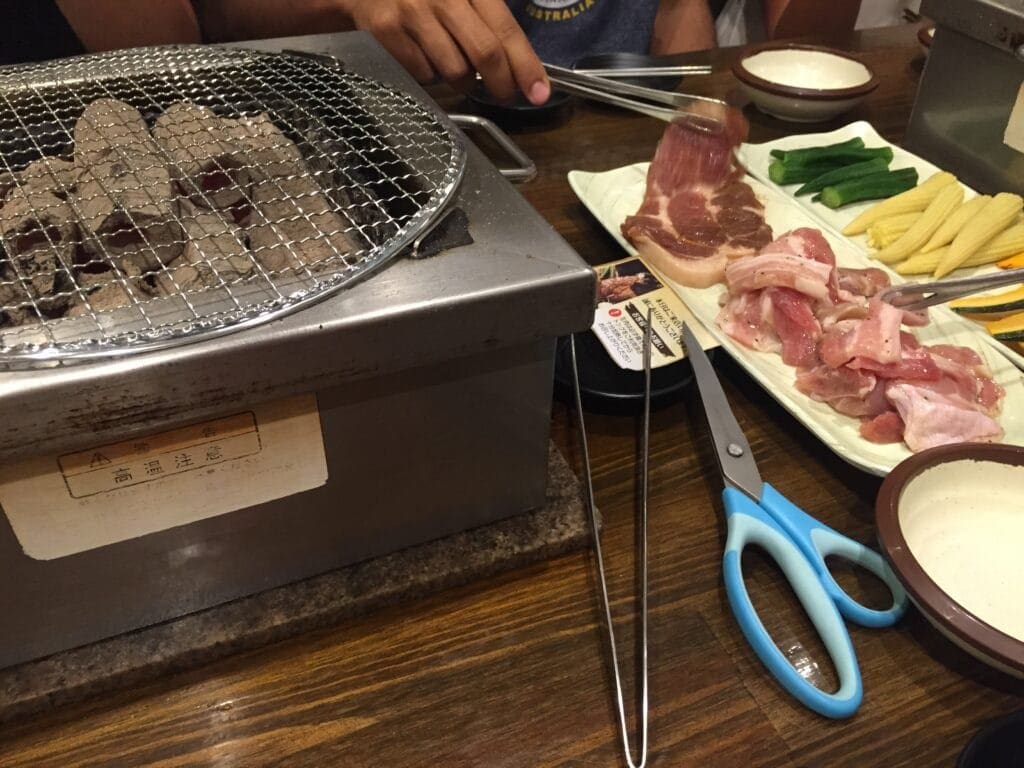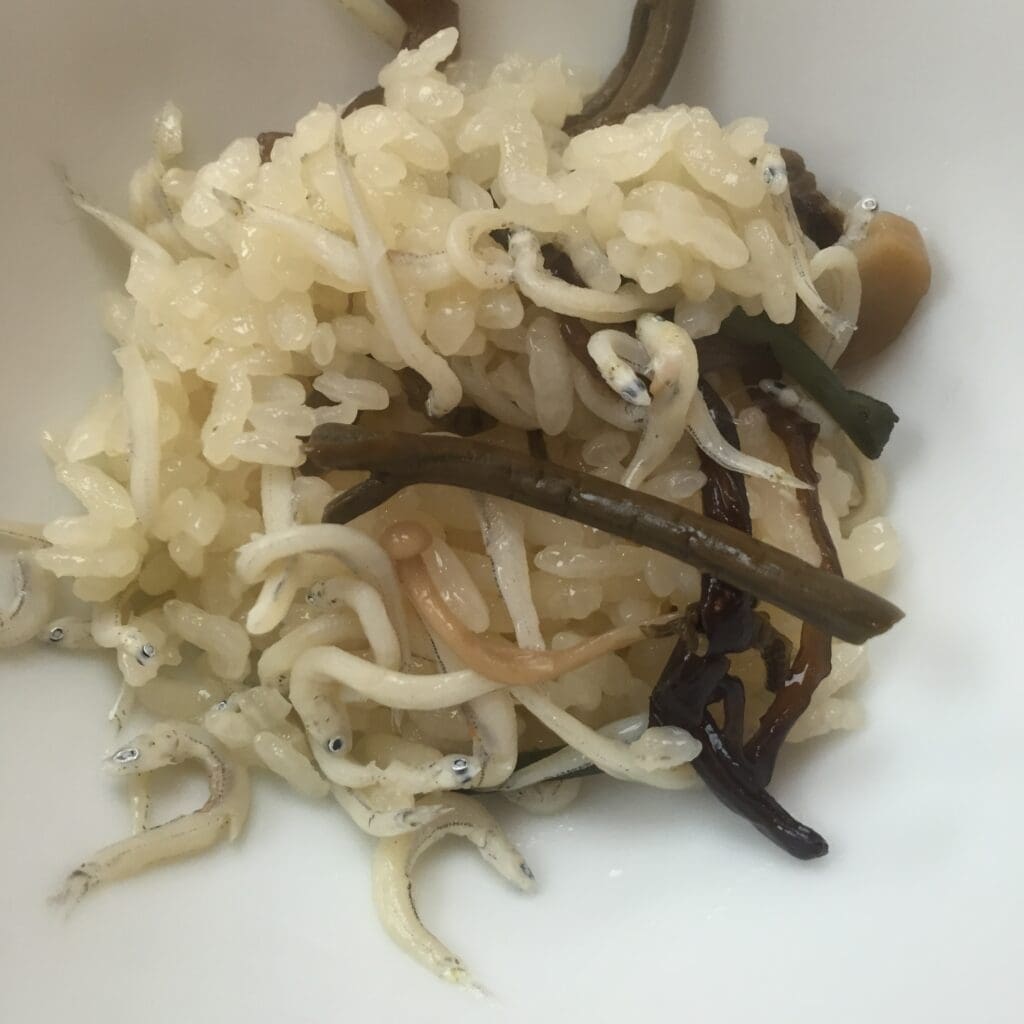Pretty much everyone and their grandmother have been to a Japanese restaurant at some point in their lives. But before you embark on a trip to Japan, be warned that the food in Japan is very different than the Westernized versions of Japanese food you might be familiar with. If you’re a diehard foodie who will try anything at least once like me, then this is your paradise. However, if you’re a picky eater, be prepared for some surprising new flavors and experiences.
I’ve compiled a list of food items in Japan that you must try and some to be wary about:
Table of Contents
Sushi
Let’s start off with the obvious- Sushi. Sushi is made very differently in Japan than back in the states. They don’t slather on disgusting cream cheese or shove avocado bits into each roll, and they definitely don’t deep fry everything in tempura. Authentic Japanese sushi is made with care and expertise to bring out the true flavors of the fish, not to mask them with a million other ingredients. It takes seven years to become a master sushi chef in Japan. They take their sushi very seriously and it pays off.
I had sushi on two occasions, once right across from Tsukiji fish market, the largest wholesale fish market in the world, and once at Sushi Bar Yasuda, which was featured on No Reservations. On both occasions, it was a life changing experience that altered the way I view food.

Yakiniku
My last meal in Tokyo was Yakiniku, or the Japanese version of Korean BBQ. There is a hot grill located in the center of the table and you are given different meats and vegetables which are all thinly sliced. You normally cook the food yourself using chop sticks to place each piece on the grill, but I was lucky enough to have a “professional” help me–an adorable, eleven year old girl who knew how to grill since she could walk (my tour guide’s daughter). The language barrier was broken by food, and she gave me all the best pieces of intestines, duck, beef, and pork. It’s not only a fun way to dine, but very tasty!

Shabu-shabu
My first meal in Japan was in a traditional restaurant where we took off our shoes and sat on cushions on the floor. We were served shabu-shabu, a Japanese dish that consists of thinly sliced beef placed in boiling broth. The name actually is derived from the sound the beef makes when entering the boiling pot.
Just like with Yakiniku, the consumer is also the cook. With a bowl of boiling broth for every few people, you take a piece of food, which is usually leaks, mushrooms, tofu, duck, beef, or even bacon, with your chopsticks and place it into the pot for a very short amount of time then fish it out with either chopsticks or a basket. It was very simple, yet oh so delicious as the food items soak up the spices and flavors of the broth. It was a very memorable experience, ingrained in my memory forever as my first taste of Japan.

Acquired Tastes
Umeboshi
“A salty and tart Japanese condiment made from unripened plums pickled in a brine.”
At the breakfast buffet at our hotel in Kyoto, I spotted these little guys and had to try them. Unfortunately, none of the items at the buffet were labeled in English, so I had no idea what I was getting myself into. I innocently bit down hard on a plum that was not only not pitted and that was so briny that it was like taking a gulp of murky sea water. I was not prepared for that at all. It was the only food that I couldn’t help but spit straight out into my hand while in Asia.

Nattō
“Traditional Japanese food made from soybeans fermented with Bacillus subtilis vas. natto.”
Lack of an English translation was also to blame for this one in a breakfast buffet in Osaka. It was package in air tight plastic, so I couldn’t smell that unmistakable smell of fermentation. As usual, I was running late and just took a big spoonful of it without hesitation. Boy, did it ever put some hair on my chest! Bitter like a million cups of black coffee mixed with Drano left in the sun for a year to rot, would be the only fitting description.
I couldn’t eat enough of anything else to get the sticky, bitter taste out of my mouth. To say it was strong would be the greatest understatement in history. Upon research when I returned home, I found out that it is one of those “acquired taste” foods.

The Thousand Variations of Tofu
“A soft, bland, white cheese-like food, high in protein content, made from curdled soybean milk.”
I gave up trying to find out particular names of tofu almost immediately. While in Japan, I felt like I tried at least 40 different kinds of tofu. Though I might be exaggerating, it was a lot more than I was planning on eating. Don’t get me wrong, I don’t dislike tofu, but I definitely prefer the firmer tofu variations. I was not a fan of the yogurt-textured ones, which were much harder to stomach both texture and taste wise.
I had the once in a lifetime opportunity to stay at Buddhist monastery while in Japan and to eat the same food as they do. Unfortunately, they are not only vegetarians, but also are against strong flavors and spices. All the variations of tofu I ate there were, needless to say, pretty bland. I could honestly live a few years without seeing another plate of tofu.

Shirasu
I often name drop Shirasu when people ask me what’s some of the most bizarre foods I’ve eaten. Shirasu is a type of whitebait, or juvenile fish, often sardine or anchovy. They’re often used as a topper for rice, and you eat them whole, baby eyeballs ‘n all. Shirasu can be eaten raw, blanched, boiled, or dried and is labeled according to the degree of processing.
I had the joy of eating them raw, which had very little taste to be honest. Being a little tipsy from sake, I almost didn’t notice they were in my bowl of rice since other than their teeny tiny eyeballs, they blended pretty well. Would I actively seek to eat them again? Probably not. But I didn’t mind them either.

2023 Update:
This article was originally written in 2015 when I started my original, now defunct travel blog Wake Up and Wander. It’s intriguing to see how I’ve grown as a writer, traveler, and general human being based on my writings from eight years ago. The things I found novel and exciting my first time in Japan like shabu-shabu or yakiniku are now regular occurrences in my life.
In the original article, I wrote an introduction describing how I was initially hesitant about the food in Asia, not knowing what to expect. I decided to replace it because the thought of me ever being concerned about not enjoying Asian food now seems absurd as it’s my favorite cuisine by a long shot.
And if you were wondering, ironically, I have made peace with both tofu and umeboshi since originally publishing this article. There’s actually a bottle of umeboshi infused balsamic vinegar in my pantry right now if you don’t believe me.


